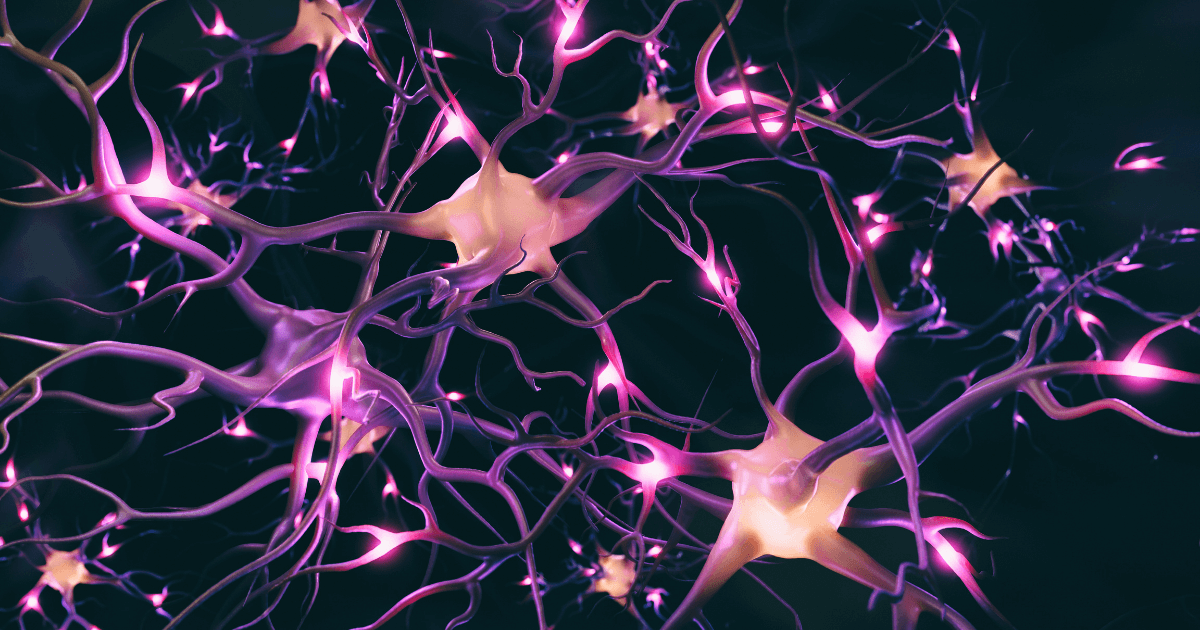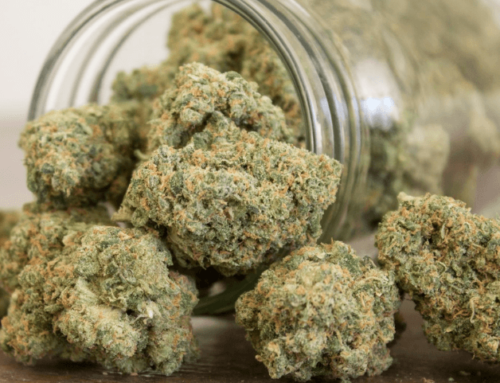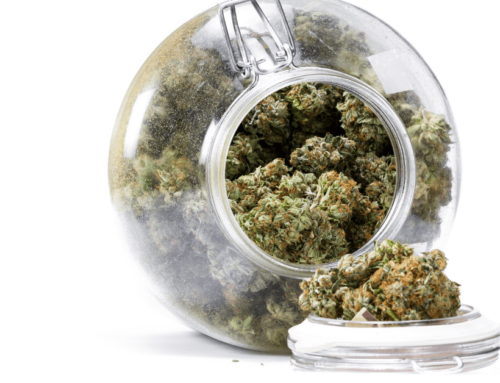An Introduction to Cannabinoids
Cannabinoids are naturally occurring compounds found in the Cannabis plant. They belong to a class of chemical compounds known as phytocannabinoids. These compounds interact with the endocannabinoid system in the human body, which consists of cannabinoid receptors, endocannabinoids, and enzymes.
Cannabinoids can also be synthesized artificially or found in other plants besides Cannabis. The most well-known cannabinoid is delta-9-tetrahydrocannabinol (THC), which is responsible for the psychoactive effects commonly associated with marijuana. However, there are numerous other cannabinoids, each with its own unique properties and potential therapeutic benefits.
To date, researchers have identified over 100 different cannabinoids in the Cannabis plant. Some of the most studied and prominent cannabinoids include cannabidiol (CBD), cannabigerol (CBG), cannabichromene (CBC), and cannabinol (CBN). Each of these cannabinoids interacts with the body’s endocannabinoid system in different ways and may have varying effects on human physiology.
The reason we have cannabinoid receptors in our body is because the endocannabinoid system plays a crucial role in regulating various physiological processes, including mood, appetite, pain sensation, immune response, and sleep. The endocannabinoid system helps maintain homeostasis, which is the body’s internal balance. Cannabinoid receptors, specifically CB1 and CB2 receptors, are present throughout the body, including the brain, immune cells, and peripheral tissues. When cannabinoids bind to these receptors, they can modulate and influence the activity of various cellular processes.
In summary, cannabinoids are chemical compounds found in the Cannabis plant, as well as other sources, that interact with the endocannabinoid system in our body. There are over 100 known cannabinoids, each with unique properties and potential therapeutic benefits. The presence of cannabinoid receptors in our body is essential for the regulation of various physiological processes and for maintaining internal balance.

What are the Different Types of Cannabinoids?
There are several different types of cannabinoids that have been identified in the Cannabis plant and other sources.
Here are some of the most well-known and studied cannabinoids:
- Tetrahydrocannabinol (THC): THC is the primary psychoactive compound found in Cannabis flowers. It is responsible for the intoxicating effects commonly associated with marijuana use. THC binds to cannabinoid receptors in the brain, particularly the CB1 receptors, and produces a range of effects, including euphoria, relaxation, and altered perception.
- Cannabidiol (CBD): CBD is another major cannabinoid found in Cannabis. Unlike THC, CBD is non-psychoactive, meaning it does not produce a “high.” CBD has gained significant attention for its potential therapeutic properties, including anti-inflammatory, analgesic, anxiolytic, and neuroprotective effects. It may also counteract some of the unwanted effects of THC. An example of a cannabidiol product is those from UNO CBD.
- Cannabinol (CBN): CBN is a cannabinoid that is formed through the degradation of THC. It is found in older Cannabis plants or when THC is exposed to air and light. CBN is known for its mild psychoactive effects and potential sedative properties. It is often associated with promoting sleep and relaxation.
- Cannabigerol (CBG): CBG is considered a minor cannabinoid because it is usually present in lower concentrations in Cannabis plants. However, it serves as a precursor to other cannabinoids, including THC and CBD. CBG has been studied for its potential anti-inflammatory, antibacterial, and neuroprotective properties.
- Cannabichromene (CBC): CBC is another non-psychoactive cannabinoid that is found in Cannabis. It interacts with both CB1 and CB2 receptors in the endocannabinoid system and may have potential anti-inflammatory and analgesic effects. CBC is often present in higher concentrations in certain Cannabis strains.
These are just a few examples of the many cannabinoids that have been identified so far. Researchers continue to explore the properties and potential therapeutic benefits of various cannabinoids, as well as their interactions with the endocannabinoid system and other receptors in the body.
How do Cannabinoids Work?
Cannabinoids work by interacting with the endocannabinoid system (ECS) in the human body. The ECS is a complex cell signalling system that plays a crucial role in regulating various physiological processes and maintaining homeostasis, or internal balance.
The endocannabinoid system consists of three main components: endocannabinoids, cannabinoid receptors, and enzymes. Endocannabinoids are naturally occurring compounds produced by the body, while cannabinoids from external sources, such as Cannabis, are referred to as phytocannabinoids.
When cannabinoids are introduced into the body, they can bind to and activate cannabinoid receptors. The two primary types of cannabinoid receptors are CB1 receptors, primarily found in the central nervous system (including the brain), and CB2 receptors, mainly present in peripheral tissues and immune cells. These receptors are proteins located on the surface of cells, and when activated, they trigger various cellular responses.
The binding of cannabinoids to cannabinoid receptors can have different effects depending on the receptor type and the specific cannabinoid involved. For example, THC binds strongly to CB1 receptors in the brain, leading to psychoactive effects, while CBD has a low affinity for these receptors and may modulate their activity indirectly.
In addition to direct interaction with cannabinoid receptors, cannabinoids can also influence the endocannabinoid system by affecting the production, release, and breakdown of endocannabinoids. They can inhibit the enzymes responsible for breaking down endocannabinoids, leading to increased levels of these natural compounds and prolonged signalling within the ECS.
Furthermore, cannabinoids can interact with other receptors and signalling pathways in the body, such as serotonin receptors, vanilloid receptors, and G-protein-coupled receptors, contributing to their diverse effects.
The overall effects of cannabinoids can vary widely depending on the specific cannabinoid, its concentration, the presence of other cannabinoids or compounds, and individual factors such as genetics and metabolism. This complexity underscores the ongoing research into cannabinoids and their potential therapeutic applications, as well as the need for further understanding of their mechanisms of action.

What are the Effects of Cannabinoids
The effects of cannabinoids can vary depending on the specific cannabinoid, its concentration, the route of administration, and individual factors such as genetics and tolerance.
Here are some common effects associated with cannabinoids:
- Psychoactive effects: Certain cannabinoids, such as THC, can produce psychoactive effects. These may include euphoria, relaxation, altered perception of time and space, increased sociability, and heightened sensory experiences. These effects are commonly associated with the recreational use of marijuana.
- Analgesic (pain-relieving) effects: Many cannabinoids, including THC and CBD, have demonstrated analgesic properties. They can modulate pain perception and reduce inflammation, potentially providing relief from various types of pain, including chronic pain, neuropathic pain, and inflammatory pain.
- Anti-inflammatory effects: Cannabinoids, particularly CBD and CBG, have shown potential anti-inflammatory properties. They can reduce inflammation by modulating the immune response and inhibiting inflammatory mediators. This makes cannabinoids a subject of interest for conditions characterized by chronic inflammation, such as arthritis, inflammatory bowel disease, and neurodegenerative disorders.
- Relaxation and stress reduction: Cannabinoids, especially CBD, have been associated with relaxation and stress reduction. They may help alleviate symptoms of anxiety and promote a sense of calmness. CBD has been investigated for its potential as an anxiolytic and antipsychotic agent.
- Appetite modulation: THC, known for its ability to stimulate appetite, has been used to help increase food intake in conditions such as cancer-related cachexia and AIDS-related wasting syndrome. This effect is commonly referred to as the “munchies.”
- Neuroprotective effects: Some cannabinoids, like CBD, have shown neuroprotective properties. They may help protect nerve cells from damage, reduce oxidative stress, and have potential therapeutic implications for neurological disorders such as epilepsy, multiple sclerosis, and Parkinson’s disease.
- Sleep regulation: Certain cannabinoids, such as CBN and THC, may have sedative properties and could influence sleep patterns. They may promote relaxation and aid in falling asleep. CBD, on the other hand, may have a more complex effect on sleep, potentially improving sleep quality and addressing sleep disorders.
It’s important to note that the effects of cannabinoids can vary among individuals, and some people may experience different or even adverse reactions. Additionally, the use of cannabinoids for therapeutic purposes should be done under medical supervision, as dosage, formulation, and individual factors need to be taken into consideration.
You Can Buy Weed Online in Canada at Weed List
Looking for a convenient and reliable way to purchase weed in Canada? Look no further than Weed List, your premier online destination for high-quality cannabis products. We take pride in offering a wide selection of online weed dispensary services offering top-grade strains, edibles, concentrates, and more, all available at your fingertips.
With our user-friendly website and secure ordering process, you can explore our extensive catalogue, read detailed product descriptions, and choose the perfect cannabis products to suit your needs.
Whether you’re a medical patient seeking relief or a recreational user looking for a delightful experience, Weed List ensures discreet packaging and swift delivery right to your doorstep. Embrace the convenience of online shopping and experience the finest selection of weed in Canada with Weed List.
References
Casarett, David J. (2019, October 1). Benefit of Tetrahydrocannabinol versus Cannabidiol for Common Palliative Care Symptoms. US National Library of Medicine, National Institutes of Health. Available at: https://www.ncbi.nlm.nih.gov/pmc/articles/PMC6776252/
Online Weed Dispensary. (2023, September 1). Buy Weed Online & Find the Most Popular Cannabis Brands. Available at: https://onlineweeddispensary.co/
Mackie, K. (2008, May 20). Cannabinoid receptors: where they are and what they do. National Library of Medicine, National Center for Biotechnology Information. Available at: https://pubmed.ncbi.nlm.nih.gov/18426493/
UNO CBD. (2023, September 1). Buy UNO CBD Products Online. Available at: https://unocbd.com/
Mehmedic Z, Chandra S, Slade D et al. Potency trends of Δ9-THC and other cannabinoids in confiscated cannabis preparations from 1993 to 2008. J Forensic Sci. 2010 Sep;55(5):1209-17. Available At: https://pubmed.ncbi.nlm.nih.gov/20487147/






Leave A Comment